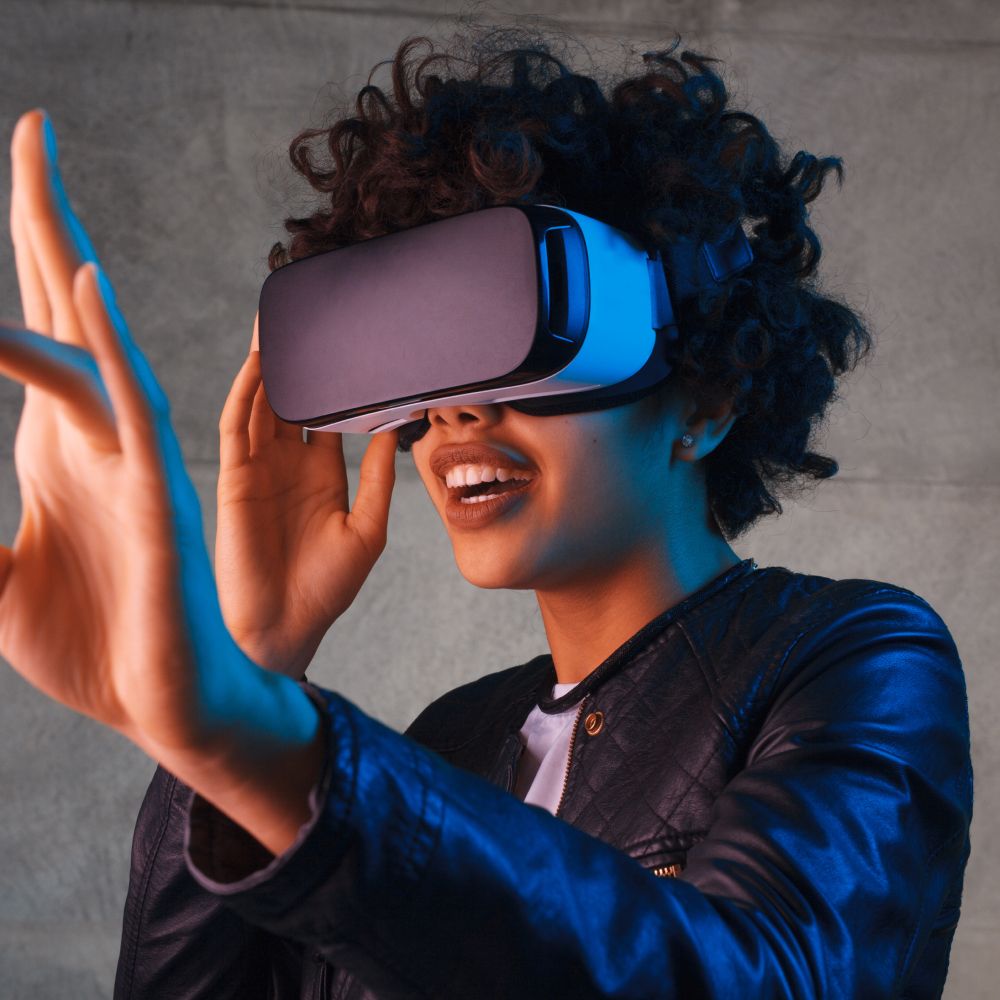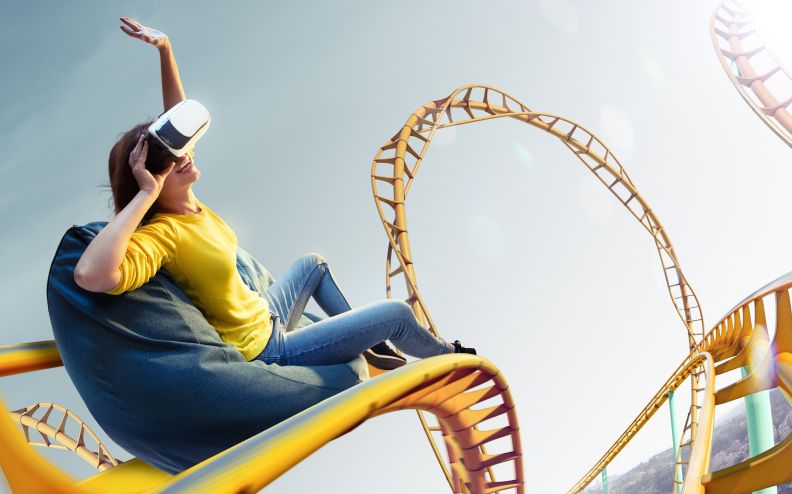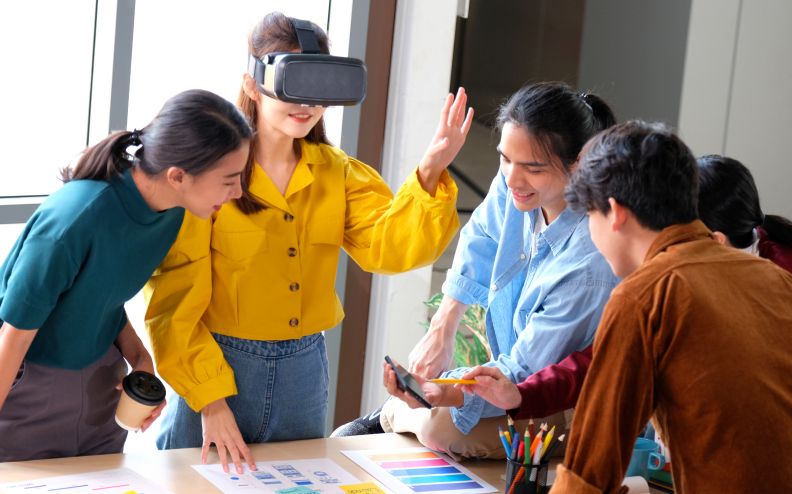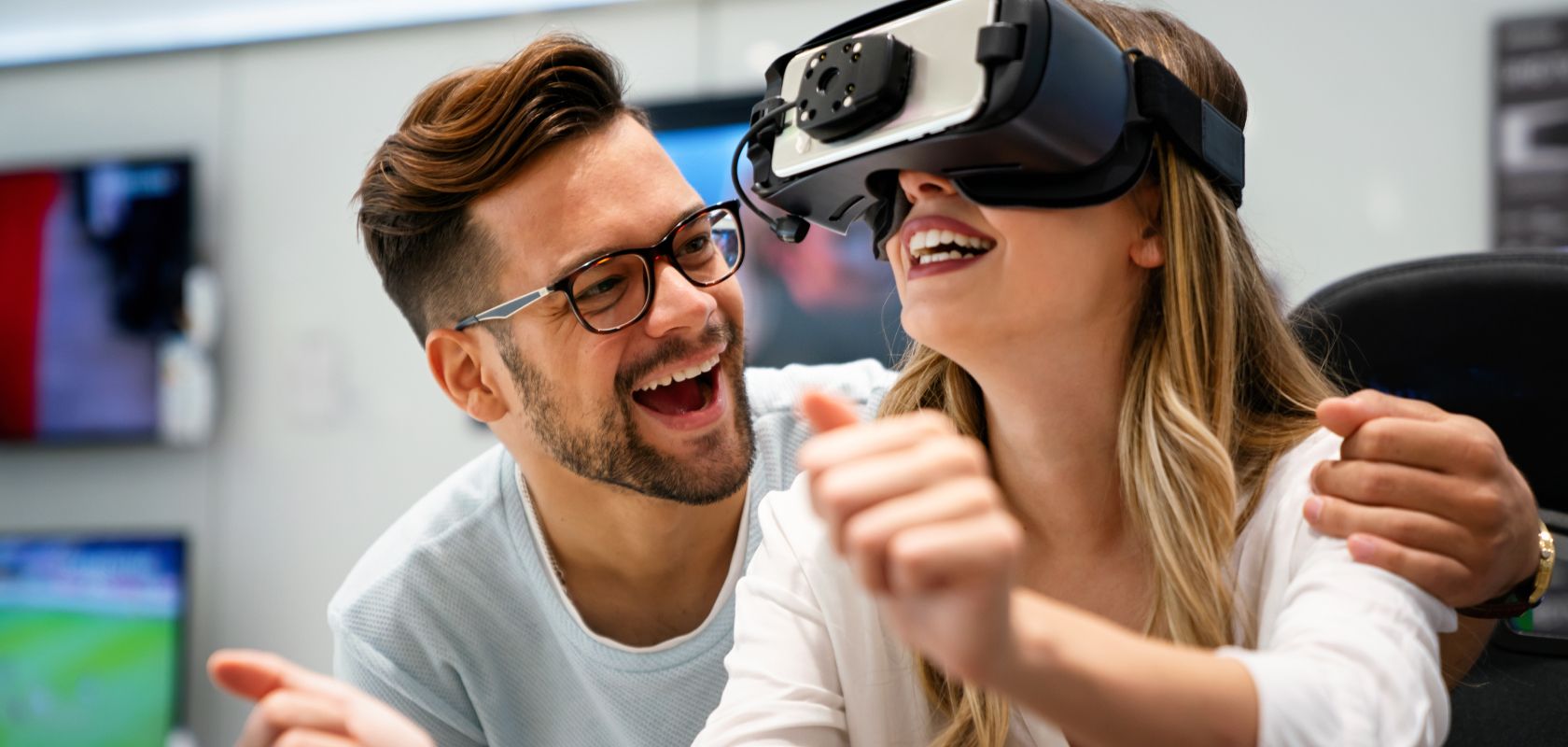The principle of VR is immersing the user in virtual worlds through simulations and making it as indistinguishable from what is real as possible. Virtual worlds achieve immersion in two ways:
Sensory stimulation
While sight, hearing, and touch are the main senses VR technology interacts with, it is not limited to them. To achieve full immersion VR has to potentially stimulate all senses, including smell and taste.
Interaction
Allowing the user to interact with the virtual environment they find themselves immersed in it, making the overall experience more believable.
Presence
VR also aims to make the user feel he is in the virtual world. In this regard, no matter how great the technological quality of the VR system is for creating realistic images, simulations are such only if they induce the user to believe they actually are in a simulated world. In this way, the virtual environment has to be designed to immerse the user and isolate them from the real world. Therefore, providing great VR experiences is a matter of art design as well.
Types of Virtual Reality
VR is classified not so much by the hardware used during simulation but by the grades of immersion achieved. In other words, a VR experience will fall into one of the following categories depending on how much the user can perceive and interact with the real world during the simulation.
Fully Immersive
Fully immersive VR is meant to completely isolate the user from the real world by stimulating the senses, while also depriving the user from sensing the real world. A head-Mounted Display (HMD) is the most popular technology utilized to achieve full immersion.
Semi-Immersive
Semi-immersive virtual reality experiences consist of surrounding the user with screens and speakers that project and sound the virtual world in a way that acknowledges the position of the user. The user will still have a notion of being in the real world since they are not completely deprived of it. Semi-immersive VR is often achieved through large projection screens or sets of monitors and other hardware such as haptic feedback wearable devices.
Non-Immersive
Lastly, there's non-immersive VR, which is in fact the most common form of virtual reality. It stands for the virtual world we access using everyday peripherals as input. The main difference is that in this type of VR we still can perceive much of the real world. The most common non-immersive VR devices are computers, video game consoles, and smartphones.
Virtual Reality Challenges
Virtual reality is in its early stages of adoption, with the potential to become a breakthrough technological solution for future-proof organizations and businesses. Despite its growing adoption across industrial sectors, the technology has some limitations that business must be aware of. This is why, it is crucial to choose technological partners that have a multidisciplinary technology knowledge, skillset and approach to overcome these current technological limitations.
Learn About Our Products
Learn MoreHistorically, a significant barrier to entry for virtual reality was the cost and visual graphic quality of the head mounted displays. Today, with critical investment and interest flowing into the virtual reality technology market, headsets prices and display quality has significantly improved, providing for better user experiences and affordable VR hardware prices.
Learn About Our Services
Learn MoreAt the same time, haptic and sensorial wearable devices have been improving but are still years away from mass market consumption. The advancement of these hardware devices will be critical for industrial applications like medical training, where the accuracy of sensorial feedback is a major factor.
Virtual Reality Use Cases
In the past years, businesses and organizations have been adopting Virtual reality technologies to solve critical business challenges. VR has, therefore, become an essential tool to provide consumers with unique experiences and has been applied to internal processes to perform tasks more efficiently.
Entertainment
One of the most popular use cases for virtual reality is within the entertainment industry. For instance, video game development has been a tremendous lever for continuous development of virtual reality technology.
Healthcare sciences
Virtual reality has also been extensively applied in many areas of healthcare sciences. Some of the most prominent include:
Cultural Heritage
Virtual reality applied to cultural heritage functions as an interactive tool to present historical settings. Virtual tours have been proven as perfect mediums to recreate the experience of walking in ancient cities where tourists can travel through space and time immersed in a virtual world. Moving away from virtual tours, VR has also been applied to cultural art installations, where semi-immersive virtual reality allows visitors to experience the works of famous painters within a virtual space.
Vehicle Digital Twins
In the automotive industry, VR is being used at each step of the value chain process. From ergonomic, exterior, and interior design, to driving simulations, virtual reality has become a critical technology for auto manufacturers.
Manufacturing
In manufacturing, virtual reality is being used for product planning, design, and employee training. VR has become a critical tool that saves time and money for businesses and organizations.










